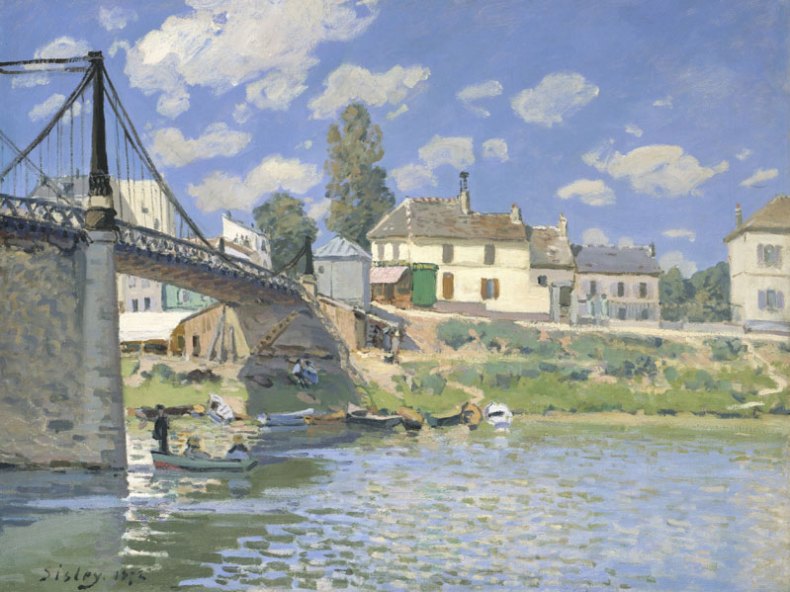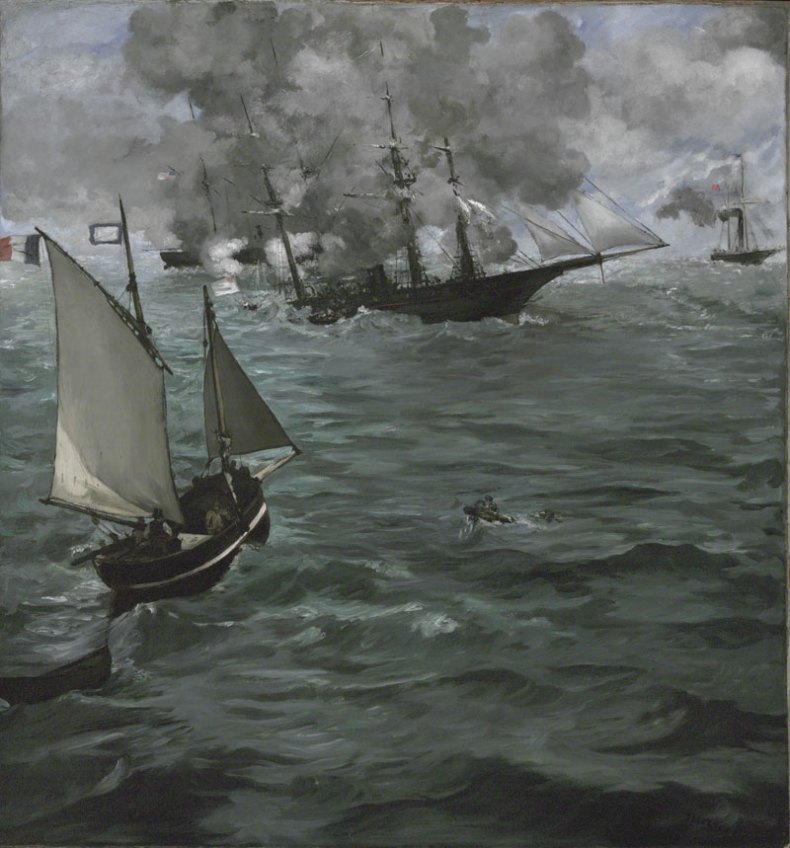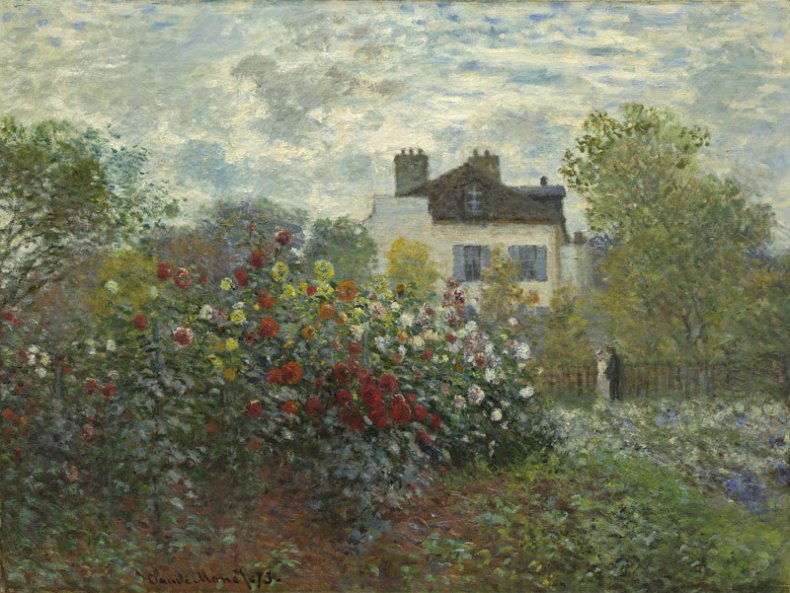The arts-filled city of Philadelphia is easily forgotten. Lying between its high profile, museum-saturated neighbours New York and Washington, a decade or so of cleaning up has made it possibly the most congenial of all three cities to visit. It has top quality architecture and art in quantity – in particular both French Impressionist paintings and the work of America’s own Impressionists. You can take a stroll along the pristine avenues of monumental Benjamin Franklin Parkway and drop in at the world-class Philadelphia Museum of Art (PMA), the Barnes Collection (awash with Impressionist and Post-Impressionist pictures), and the Rodin Museum (founded by movie theatre magnate Jules E Mastbaum). You can stroll through the gentrified cobbled lanes of Rittenhouse Square, and visit the Pennsylvania Academy of Fine Arts (PAFA) and the University of Pennsylvania’s art galleries, or seek out the lesser known James A Michener, Woodmere and Brandywine art museums. Across the city there are contemporary murals, pop-up art installations and quantities of fine public sculptures, all of which are now linked thanks to the initiative, ‘museum without walls’.
The event that puts Philadelphia on the map this summer is the arrival at the PMA, from Paris via London, of the biggest show of Impressionist paintings to have been assembled since one in London in 1905. This is its only US stop. Many of the paintings in ‘Discovering the Impressionists: Paul Durand-Ruel and the New Painting’ belong to PMA, and a full hundred objects in the museum passed through the dealer Durand-Ruel’s hands. Which poses the question: why were Philadelphians buying Impressionist paintings?

The Bridge of Villeneuve-la-Garenne (1872), Alfred Sisley. Lent by The Metropolitan Museum of Art: Gift of Mr. and Mrs. Henry Ittleson Jr., 1964
For this, a little history is necessary. Founded and laid out by William Penn on land given to his father by Charles II in 1681, Philadelphia always considered itself the first and finest of US cities. Indeed, it initiated US public parks, schools, newspapers and universities. PAFA was established in 1805 and became both an arbiter of taste for collectors and the determiner for an artist’s success – George Bellows would later suffer from their board’s critical eye. From 1800 to 1830, Philadelphia was the largest city in the US, its merchants making fortunes in trade, steamboats, railways, banking. After the Civil War, their wealth stepped up as the city expanded. So did their spending, which they did with well-informed confidence. They beautified Philadelphia and competed to make it America’s cultural capital. The first official World’s Fair in America was held in Philadelphia in 1876; more than 10 million people visited (20% of the nation). Out of it was born the PMA, opening the following year. The fair also helped stimulate America’s wealthy to travel to Europe where art was high on their shopping list.
Durand-Ruel, champion of the burgeoning Impressionist painters, was one of the dealers they sought out in Paris. American collectors had been visiting him since the 1860s, as the dealer’s stock books reveal (one is in the PMA show). Clients came from New York, Cincinnati and Boston as well as from Philadelphia to buy Delacroix, Rousseau and Millet. Philadelphians included Adolph E Borie (whose bold taste impressed Durand-Ruel), William P. Wilstach, J. Gillingham Fell and Henry Gibson.

The Battle of the U.S.S. “Kearsarge” and the C.S.S. “Alabama” (1864), Édouard Manet. Philadelphia Museum of Art, (John G. Johnson Collection)
It was possibly Henry Clay Angell of Boston who was the first American to by an Impressionist painting – Pissarro’s Flood at Pontoise, in 1875 (it is in the PMA show); the future Mrs Havemeyer of New York was close on his tails when Mary Cassett helped her buy a Monet and a Degas two years later, an early landmark in the great collector’s life. Cassatt began to buy for herself, and encouraged her family. In 1883 her brother Alexander, President of the hugely wealthy Pennsylvania Railroad, visited Durand-Ruel and bought a Monet, Degas and a Renoir for his Philadelphia mansion. They soon possessed 30 Impressionist paintings, introducing these ‘eccentric’ artists to their friends including his colleague Frank Thomson. The PMA show includes John G. Johnson’s 1888 purchase, Manet’s great The Battle of the U.S.S. Kearsarge and the C.S.S. Alabama.
Durand-Ruel then made a bold move. Having networked with collectors and potential collectors during exhibitions Boston and New York, in 1887 he opened a permanent gallery in New York, first on West 23rd Street, then at 297 Fifth Avenue (leased from the Havemeyers). It was instrumental in developing the American taste for Impressionism, despite the 30% duty on imported art, which was, presumably, passed on to the buyer. If proof were needed of Durand-Ruel’s seminal influence, in 1913 he had done well enough in the US to commission Carrere and Hastings to design an eight-storey gallery and residence at 12 East 57th Street.

The Artist’s Garden in Argenteuil (A Corner of the Garden with Dahlias) (1873), Claude Monet. National Gallery of Art, Washington: Gift of Janice H. Levin, in Honor of the 50th Anniversary of the National Gallery of Art
‘Without America’, he wrote in his memoires, ‘I would have been lost, ruined, after having bought so many Monets and Renoirs.’ Philadelphia collectors, from Alexander Cassatt to Albert C. Barnes may have gone art shopping in Paris – who would not enjoy a jaunt there? But it was Durand-Ruel’s shows in New York and other US cities that formed Americans’ lasting taste for Impressionism and thence their impressive collections. Renoir’s Portrait of Mademoiselle Legrand, in the PMA show, was donated by a later major Philadelphia collector, Henry Plumer McIlhenny (1910–86), who was Chairman of the PMA and whom Andy Warhol considered ‘the only person in Philadelphia with glamour’.
Review: ‘Discovering the Impressionists: Paul Durand-Ruel and the New Painting’
Lead image: used under Creative Commons licence (CC BY-SA 3.0)

From Paris to Philadelphia: how US collectors supported the Impressionists
Philadelphia_Art_Museum The front facade of the Philadelphia Museum of Art at night. Source: Nfutvol/Wikimedia Commons
Share
The arts-filled city of Philadelphia is easily forgotten. Lying between its high profile, museum-saturated neighbours New York and Washington, a decade or so of cleaning up has made it possibly the most congenial of all three cities to visit. It has top quality architecture and art in quantity – in particular both French Impressionist paintings and the work of America’s own Impressionists. You can take a stroll along the pristine avenues of monumental Benjamin Franklin Parkway and drop in at the world-class Philadelphia Museum of Art (PMA), the Barnes Collection (awash with Impressionist and Post-Impressionist pictures), and the Rodin Museum (founded by movie theatre magnate Jules E Mastbaum). You can stroll through the gentrified cobbled lanes of Rittenhouse Square, and visit the Pennsylvania Academy of Fine Arts (PAFA) and the University of Pennsylvania’s art galleries, or seek out the lesser known James A Michener, Woodmere and Brandywine art museums. Across the city there are contemporary murals, pop-up art installations and quantities of fine public sculptures, all of which are now linked thanks to the initiative, ‘museum without walls’.
The event that puts Philadelphia on the map this summer is the arrival at the PMA, from Paris via London, of the biggest show of Impressionist paintings to have been assembled since one in London in 1905. This is its only US stop. Many of the paintings in ‘Discovering the Impressionists: Paul Durand-Ruel and the New Painting’ belong to PMA, and a full hundred objects in the museum passed through the dealer Durand-Ruel’s hands. Which poses the question: why were Philadelphians buying Impressionist paintings?
The Bridge of Villeneuve-la-Garenne (1872), Alfred Sisley. Lent by The Metropolitan Museum of Art: Gift of Mr. and Mrs. Henry Ittleson Jr., 1964
For this, a little history is necessary. Founded and laid out by William Penn on land given to his father by Charles II in 1681, Philadelphia always considered itself the first and finest of US cities. Indeed, it initiated US public parks, schools, newspapers and universities. PAFA was established in 1805 and became both an arbiter of taste for collectors and the determiner for an artist’s success – George Bellows would later suffer from their board’s critical eye. From 1800 to 1830, Philadelphia was the largest city in the US, its merchants making fortunes in trade, steamboats, railways, banking. After the Civil War, their wealth stepped up as the city expanded. So did their spending, which they did with well-informed confidence. They beautified Philadelphia and competed to make it America’s cultural capital. The first official World’s Fair in America was held in Philadelphia in 1876; more than 10 million people visited (20% of the nation). Out of it was born the PMA, opening the following year. The fair also helped stimulate America’s wealthy to travel to Europe where art was high on their shopping list.
Durand-Ruel, champion of the burgeoning Impressionist painters, was one of the dealers they sought out in Paris. American collectors had been visiting him since the 1860s, as the dealer’s stock books reveal (one is in the PMA show). Clients came from New York, Cincinnati and Boston as well as from Philadelphia to buy Delacroix, Rousseau and Millet. Philadelphians included Adolph E Borie (whose bold taste impressed Durand-Ruel), William P. Wilstach, J. Gillingham Fell and Henry Gibson.
The Battle of the U.S.S. “Kearsarge” and the C.S.S. “Alabama” (1864), Édouard Manet. Philadelphia Museum of Art, (John G. Johnson Collection)
It was possibly Henry Clay Angell of Boston who was the first American to by an Impressionist painting – Pissarro’s Flood at Pontoise, in 1875 (it is in the PMA show); the future Mrs Havemeyer of New York was close on his tails when Mary Cassett helped her buy a Monet and a Degas two years later, an early landmark in the great collector’s life. Cassatt began to buy for herself, and encouraged her family. In 1883 her brother Alexander, President of the hugely wealthy Pennsylvania Railroad, visited Durand-Ruel and bought a Monet, Degas and a Renoir for his Philadelphia mansion. They soon possessed 30 Impressionist paintings, introducing these ‘eccentric’ artists to their friends including his colleague Frank Thomson. The PMA show includes John G. Johnson’s 1888 purchase, Manet’s great The Battle of the U.S.S. Kearsarge and the C.S.S. Alabama.
Durand-Ruel then made a bold move. Having networked with collectors and potential collectors during exhibitions Boston and New York, in 1887 he opened a permanent gallery in New York, first on West 23rd Street, then at 297 Fifth Avenue (leased from the Havemeyers). It was instrumental in developing the American taste for Impressionism, despite the 30% duty on imported art, which was, presumably, passed on to the buyer. If proof were needed of Durand-Ruel’s seminal influence, in 1913 he had done well enough in the US to commission Carrere and Hastings to design an eight-storey gallery and residence at 12 East 57th Street.
The Artist’s Garden in Argenteuil (A Corner of the Garden with Dahlias) (1873), Claude Monet. National Gallery of Art, Washington: Gift of Janice H. Levin, in Honor of the 50th Anniversary of the National Gallery of Art
‘Without America’, he wrote in his memoires, ‘I would have been lost, ruined, after having bought so many Monets and Renoirs.’ Philadelphia collectors, from Alexander Cassatt to Albert C. Barnes may have gone art shopping in Paris – who would not enjoy a jaunt there? But it was Durand-Ruel’s shows in New York and other US cities that formed Americans’ lasting taste for Impressionism and thence their impressive collections. Renoir’s Portrait of Mademoiselle Legrand, in the PMA show, was donated by a later major Philadelphia collector, Henry Plumer McIlhenny (1910–86), who was Chairman of the PMA and whom Andy Warhol considered ‘the only person in Philadelphia with glamour’.
Review: ‘Discovering the Impressionists: Paul Durand-Ruel and the New Painting’
Lead image: used under Creative Commons licence (CC BY-SA 3.0)
Unlimited access from just $16 every 3 months
Subscribe to get unlimited and exclusive access to the top art stories, interviews and exhibition reviews.
Share
Recommended for you
Same pictures, different story: Impressionism arrives in Philadelphia
This is the best version yet of an impressive exhibition
Art in the Garden: Four great ways to enjoy art outdoors in the USA
Soak up some sun and some culture at the same time
East meets West: The Hudson River School at LACMA
The New-York Historical Society has sent a spectacular group of landscape paintings to LACMA this winter